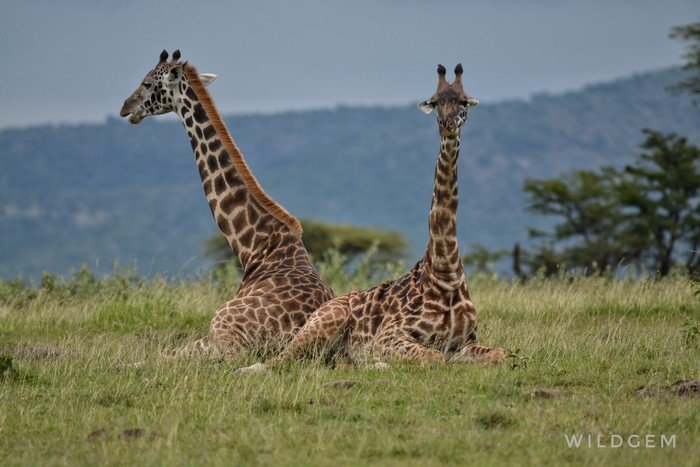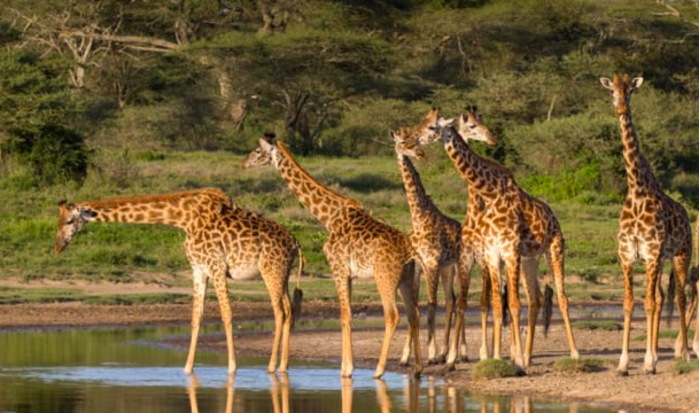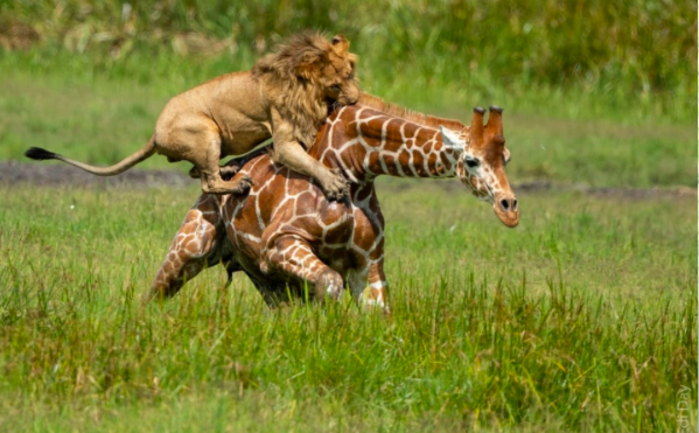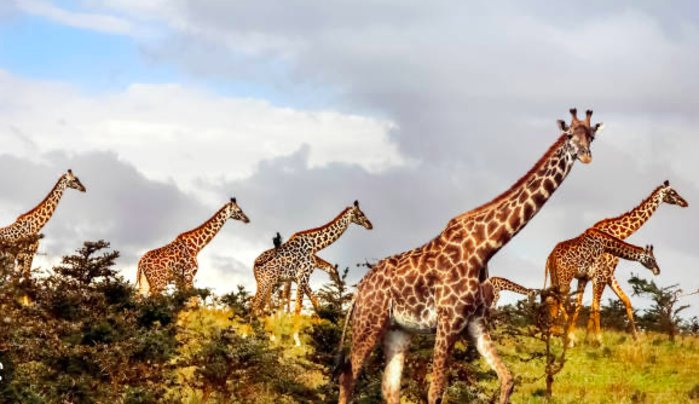GIRAFFE
Towers of the wild
Monday, 30.Jan 2023
The giraffe are mammals that belongs to the order artiodactyla and the Giraffidae family which also includes the Okapi, an animal that shares certain characteristics with the giraffe but with a very different appearance.
Most of us have heard a lot about giraffes, and we have enjoyed watching their impressive size in zoos. We know that they have great height, are native to Africa and that its most iconic characteristic is it’s long neck that’s serves them to reach the top of the trees when looking for food.
Giraffe are the tallest terrestrial animals in the world thanks to their towering legs and long necks. They have a pair ossicones or horn covered with skin and a short vertical mane that goes from the head to the hump at the end of the neck. They measure up to 6 m in height and weight maximum of 2,000 kg, dimensions which combined with coat giving them a unique and beautiful look. A Giraffe’s legs alone are taller than many humans, these long legs allow giraffes to run fast as 35 miles an hour over short distance and cruise comfortably at 10 miles an hour over longer distances.
Giraffes use their height to good advantage and browse on leaves and buds in treetops that few other animals can reach (acacias are a favorite). Even the giraffe’s tongue is long! The 21-inch tongue helps them pluck tasty morsels from branches. Giraffes eat most of the time and like cows, regulate food and chew it as cub. A giraffe eats hundreds of pounds of leaves each week and must travel miles to find enough food.
The giraffe’s stature can be a disadvantage as well- it is difficult and dangerous for a giraffe to drink at a water hole. To do so they must spread their legs and bend down in an awkward position that makes them vulnerable to predators like Africa’s big cats. Giraffes only need to drink once every several days; they get most of their water from the luscious plants they eat. The giraffe’s height also helps it to keep a sharp lookout for predators across the wide expense of the African savanna.
Female giraffes give birth while standing up. Their young endure a rather rude welcome into the world by falling more than 5 feet to the ground. These infants can stand half an hour and run with their mothers an incredible ten hours after birth. The giraffe has the longest tail of any land mammal. Their tail can grow to 8 feet (2.4 meter) long, including the tuft on the end. In addition to its great height, the giraffe is also one of the heaviest land animals. Exceptionally large males may weigh up to 1,900 kilograms (about 4,200 pounds). Female giraffe are smaller, rarely reaching half that weigh. Compared to other hoofed mammals the giraffe has a relatively short body, however, its legs are disproportionately long.
Giraffes front legs are about 10% longer than their hind legs, a feature that contributes to the animals steeply sloping back. Mature giraffes have large hooves about the size of dinner plates, around 12 inches wide.
Threats:
Giraffe have experienced several habitat loss and fragmentation as a result of the expansion of human activities into their habitats. Uncontrolled timber harvest, the conversion of native habitat for agricultural development, mining, poor land-use planning and urban expansion have played a role in the loss and degradation of giraffe habitat. Giraffe are hunted both legally and illegally for sport and for their parts and products. Lack of enforcement of local laws, in addition to civil unrest in certain parts of giraffes range, have allowed poaching for bushmeat, bones, tail hair and other giraffe parts to become a leading cause of this species mortality and major contributor to its decline. Poaching and legal sport hunting are both spurred by the international trade in giraffe parts and products. Giraffes are further threatened by the proliferation of diseases like giraffe skin disease, as well as inbreeding depression in isolated populations, collisions with automobiles and airplanes, and the increased frequency and magnitude of droughts associated with climate change.
Giraffe behavior
Female giraffes associate in groups of a dozen or so members, occasionally including a few younger males. Male giraffes tend to live in bachelor herds, with older males often leading solitary lives, an individual giraffe can join or leave the herd at any time for no particular reason. Because giraffes are so widely scattered, it may seem that they do not keep in contact with each other, however, this is not true. A giraffe keen eyesight means they can keep an eye on their neighbors even at a distance.
Female giraffe spend just over half a 24-hour day browsing, male giraffes spend less time doing this – about 43% of the time that the female does. At night is mostly spent lying down ruminating, especially in the hours after dark and before down. They normally lie down only at night, tucking their feet under the body and usually keeping the head upright. However when a giraffe is sleeping, something it does only for just a few minutes at a time, it curves it’s neck around and rest its head on or near its behind.
Male giraffes spend about 22% of the 24 hours walking, compared to 13% for female giraffes. The rest of the time male giraffe are searching for a female giraffe to mate with, giraffe’s head do not have a leader and individual giraffes show no particular preferences for other in the herd.
Young giraffes are never left alone, however, they are looked after in kind of nursery group where the females help look after each-others calves (baby giraffes). Giraffes spend up to half their time feeding and most of the remainder is taken up either by searching for food or slowly digesting what they have eaten. Sometimes giraffes sleep during the daytime, often while standing.






